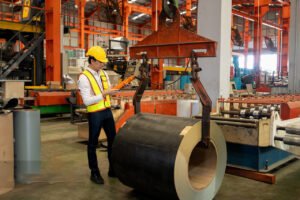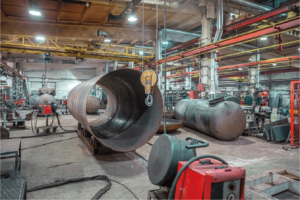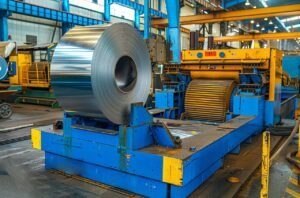Calculate Stainless Plate Weight: mm-to-kg Formula
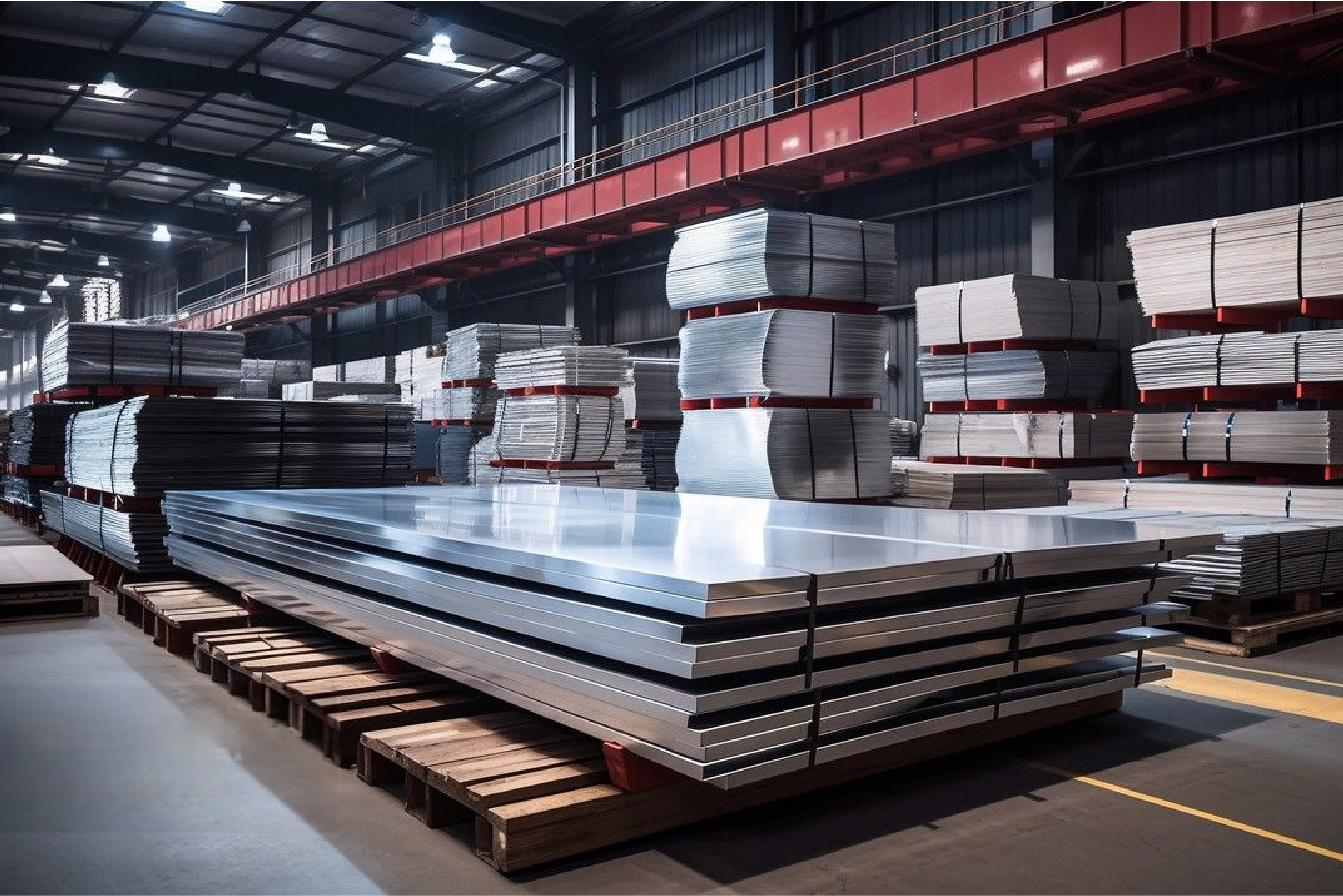
Are you struggling with accurately estimating material needs or shipping costs for stainless steel plates? Inaccurate weight calculations can lead to unexpected expenses and logistical headaches. As Global Business Director at MFY, I've seen how precise calculations are fundamental, and this guide will equip you with the essential mm-to-kg formula and knowledge.
Calculating stainless steel plate weight involves using the formula: Weight calculation: Weight (kg) = Length (m) × Width (m) × Thickness (mm) × Density (kg/m³) / 1000. Accurate determination of each variable, especially the correct density for the specific stainless steel grade, is crucial for precise results.
Understanding this calculation is more than just a technical exercise; it's a cornerstone of efficient project management and cost control in any industry that utilizes stainless steel. Whether you're in manufacturing, construction, or distribution, getting the weight right impacts everything from initial budgeting to final installation. Let’s delve into how you can master this.
Throughout my years at MFY, navigating the complexities of the global stainless steel market, I've consistently emphasized the importance of precision. Incorrect weight estimations don't just affect freight charges; they can lead to ordering too much or too little material, impacting production schedules and even structural integrity if underspecified. For instance, a major engineering contractor we work with in Southeast Asia once faced significant project delays because their initial weight calculations1 for a large consignment of 316L plates were off by 8%, leading to underestimated crane capacity requirements on site. This highlighted how a seemingly small oversight in calculation can cascade into substantial operational challenges. This guide aims to provide you with the clarity needed to avoid such pitfalls, drawing from MFY's extensive experience in the stainless steel supply chain.
How to determine the thickness of a stainless steel plate in millimeters?
Ever found yourself uncertain about the exact thickness of a stainless steel plate, leading to potential miscalculations? This uncertainty can compromise your entire project's material costing. As someone deeply involved in stainless steel trading, I know that precise measurement tools are your best ally here.
To determine the thickness of a stainless steel plate in millimeters, use precision measuring instruments like a micrometer or vernier calipers. For accuracy, measurements should be taken at multiple points across the plate and an average considered, especially for larger plates.
Accurately measuring the thickness of a stainless steel plate is the foundational first step before any weight calculation can be reliably performed. It’s not just about having a tool; it’s about using the right tool correctly and understanding potential variations. In my experience at MFY, we often advise clients, particularly those in precision manufacturing, to invest in quality measuring devices and establish a consistent measurement protocol. For instance, a client involved in producing high-tolerance components for the aerospace sector shared how implementing a three-point measurement system per plate, using calibrated digital calipers, dramatically reduced their material variance and improved cost forecasting. The choice between a micrometer and a caliper often depends on the required precision and the plate's accessibility. Micrometers generally offer higher precision, ideal for thinner sheets or when exacting tolerances are paramount. Calipers, while slightly less precise, are more versatile for various types of measurements, including inner and outer dimensions if needed, beyond just flat thickness. Remember, the manufacturing process itself can introduce slight variations in thickness across a large plate, so relying on a single spot measurement can be misleading. This is why our internal quality control at MFY for our stainless steel coils and sheets involves multiple checks.
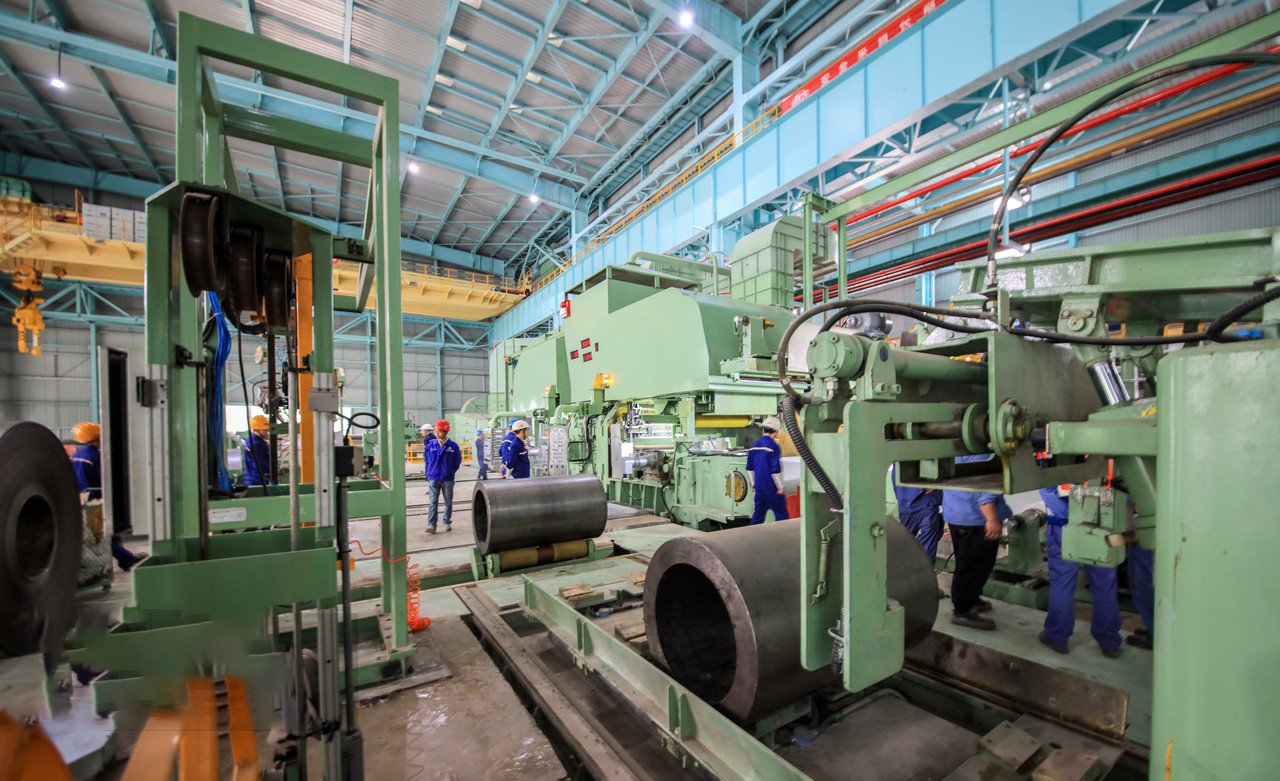
Understanding Measurement Tolerances in Stainless Steel Plates
Stainless steel plates, like all manufactured goods, are produced within certain dimensional tolerances. Thickness tolerance refers to the permissible variation from the nominal (specified) thickness. Standards like ASTM A480/A480M outline these acceptable ranges for various plate thicknesses and types. For example, for a nominally 5mm thick hot-rolled stainless steel plate (e.g., Type 304), the ASTM A480 standard might allow a tolerance of ±0.30mm. This means the actual thickness could range from 4.70mm to 5.30mm. These tolerances exist due to the inherent variables in the rolling and processing stages of manufacturing; achieving absolute perfection is practically and economically unfeasible.
The impact of not accounting for these tolerances can be significant, especially when dealing with large quantities of material. If a project is designed based on the nominal thickness but the supplied plates are consistently at the upper end of the tolerance range, the total weight of the material will be higher than anticipated. I recall a specific instance with a client, "BuildStrong Inc.," a construction contractor specializing in large-scale architectural projects. They had ordered a substantial quantity of stainless steel plates for a facade. Their initial weight calculations were based strictly on the nominal thickness. However, the supplied material, while perfectly within ASTM tolerance, was predominantly on the higher side of that tolerance. This resulted in the overall consignment being nearly 4% heavier than they budgeted for, impacting not just material cost slightly, but more critically, their transportation logistics and the lifting equipment capacity they had arranged on-site. This experience taught them, and us at MFY reinforced, the importance of considering the potential range of thickness, especially for weight-sensitive applications.
For practical purposes, when calculating weight for estimation, some project managers might use the nominal thickness, while others, for conservative budgeting, might use the nominal plus a certain percentage of the tolerance, or even the maximum permissible thickness. For very large orders, requesting actual thickness measurements from a sample or understanding the supplier's typical production variance can be beneficial. At MFY, when a client's application is particularly sensitive to weight or dimensional accuracy, we work closely with them to ensure the supplied material meets their specific, sometimes tighter than standard, requirements, drawing from our integrated supply chain capabilities.
Best Practices for Using Measurement Tools
The accuracy of your thickness measurement is directly tied to the correct use of your chosen instrument. For micrometers, always ensure the anvil and spindle faces are clean before use. The micrometer should be 'zeroed' correctly – for most, this means ensuring the '0' on the thimble aligns with the datum line on the sleeve when the faces are closed. When measuring, apply consistent, gentle pressure using the ratchet stop or friction thimble; over-tightening can deform thin plates or lead to inaccurate readings. I've seen technicians new to micrometers sometimes force the thimble, which is a common mistake.
Vernier or digital calipers are more versatile but require careful handling to avoid errors. When measuring thickness, Measurement errors with calipers2 should be avoided. Ensure that the jaws are perpendicular to the plate surface to prevent parallax error.
Crucially, all measuring tools require regular calibration. At MFY's processing facilities, our quality control labs have a strict schedule for calibrating micrometers, calipers, and other metrology equipment against traceable standards. This ensures that the measurements we rely on for our stainless steel coils, sheets, and pipes are consistently accurate. For businesses using these tools daily, establishing an internal calibration check, even if it's a simple comparison against a set of gauge blocks, can prevent drift and maintain measurement integrity. Ignoring calibration is like navigating without a true north – eventually, you'll stray off course.
The Significance of Multiple Measurement Points
A single thickness measurement on a stainless steel plate, especially a larger one, is rarely representative of the entire plate. Variations can occur due to the rolling process, slight crowning (where the center might be marginally thicker or thinner than the edges), or even minor surface undulations. Therefore, taking measurements at multiple points is a critical best practice. A common approach for rectangular plates is to measure near each of the four corners and one in the center. For very large plates, more points might be necessary along the edges and across the width.
By taking multiple readings, you can calculate an average thickness that provides a more accurate representation of the plate's overall material volume. This average is then used in the weight calculation formula. For instance, a client of ours at MFY, "PrecisionFab Ltd.," an equipment integrator, was struggling with discrepancies between their estimated and actual material usage for complex fabrications. We advised them to implement a five-point measurement protocol for all incoming stainless steel sheets. After doing so, they reported a consistent 5% improvement in their material estimation accuracy, which significantly impacted their project costing and profitability.
The data gathered from multiple points can also reveal if a plate is significantly out of tolerance in a specific area, which might be critical for certain applications. For example, if one edge is consistently thinner than the rest, it could be an issue for welding or for components requiring uniform load-bearing capacity. This detailed approach moves beyond a simple number and provides a more comprehensive understanding of the material you're working with.
Here’s a simple table illustrating how averaging can work:
| Measurement Point | Thickness (mm) |
|---|---|
| Corner 1 (Top-Left) | 4.95 |
| Corner 2 (Top-Right) | 5.02 |
| Center | 5.05 |
| Corner 3 (Bottom-Left) | 4.98 |
| Corner 4 (Bottom-Right) | 5.00 |
| Average Thickness | 5.00 |
Using this average thickness in subsequent calculations will yield a far more reliable weight estimate than relying on a single, potentially unrepresentative, measurement.
Micrometers offer higher precision than calipersTrue
Micrometers are designed for high-precision measurements, especially for thin materials, while calipers are more versatile but slightly less precise.
A single measurement is sufficient for thicknessFalse
Due to potential variations across a plate, multiple measurements should be taken and averaged for accurate thickness determination.
What is the formula to convert millimeters of thickness to kilograms in weight?
Are you puzzling over how to translate plate dimensions, especially thickness in millimeters, into a practical weight in kilograms? Using an incorrect or incomplete formula is a common pitfall leading to costly errors. From my vantage point at MFY, I can assure you there's a standard, reliable formula.
The formula to convert stainless steel plate dimensions, including thickness in millimeters, to weight in kilograms is: Weight (kg) = Length (m) × Width (m) × Thickness (mm) × Density (kg/m³) / 1000. This ensures unit consistency for an accurate result.
This formula is the linchpin of accurate weight calculation for stainless steel plates. Each component plays a vital role: Length and Width, typically measured in meters (m), define the plate's area. Thickness, often more conveniently measured in millimeters (mm) for precision, must be correctly factored in. The Density of stainless steel3, specific to the grade of stainless steel (e.g., 304, 316L, 430) and expressed in kilograms per cubic meter (kg/m³), is a critical multiplier. The division by 1000 is a crucial conversion factor that reconciles the thickness unit (mm) with the other units (m) to yield a final weight in kilograms (kg). As we at MFY often explain to our clients, particularly those new to sourcing stainless steel internationally, understanding why each part of this formula exists and ensuring unit consistency is paramount. For example, a distributor we partner with in India initially faced challenges because their older inventory system didn't automatically handle the mm-to-meter conversion for thickness, leading to underestimations until the formula was correctly implemented across their platform. This highlights how a seemingly small detail in a formula can have broad operational implications.

Deriving the Weight Calculation Formula: A Step-by-Step Breakdown
The fundamental principle behind calculating the weight of any uniform object is Weight = Volume × Density. Let's break down how we arrive at the specific formula for a stainless steel plate.
First, we calculate the volume of the plate. For a rectangular plate, Volume is Length × Width × Thickness. To ensure our units are consistent for the density value (which is typically in kg/m³), we should aim to have our volume in cubic meters (m³). If Length (L) and Width (W) are measured in meters (m), and Thickness (T) is measured in millimeters (mm), we need to convert the thickness to meters. Since 1 meter = 1000 millimeters, Thickness (m) = Thickness (mm) / 1000.
So, Volume (m³) = L (m) × W (m) × [T (mm) / 1000].
Next, we incorporate density. The density (ρ)4 of stainless steel is typically given in kg/m³.
Therefore, Weight (kg) = Volume (m³) × Density (kg/m³).
Substituting the volume expression, we get:
Weight (kg) = [L (m) × W (m) × T (mm) / 1000] × ρ (kg/m³).
This is often rearranged for clarity as:
Weight (kg) = (L (m) × W (m) × T (mm) × ρ (kg/m³)) / 1000.
At MFY, our internal ERP systems and quoting tools for products like stainless steel coils and sheets are all built around this standardized formula. For example, to calculate the weight of a Type 304 stainless steel plate that is 2.5 meters long, 1.2 meters wide, and 3 mm thick (Density of 304 SS ≈ 8000 kg/m³):
Weight (kg) = (2.5 m × 1.2 m × 3 mm × 8000 kg/m³) / 1000
Weight (kg) = (9 m² × mm × 8000 kg/m³) / 1000 (Incorrect intermediate step, should be (2.5 * 1.2 * 3 * 8000) / 1000)
Let's correct that: Volume = 2.5m * 1.2m * (3/1000)m = 0.009 m³.
Weight = 0.009 m³ * 8000 kg/m³ = 72 kg.
Using the combined formula: (2.5 × 1.2 × 3 × 8000) / 1000 = 72000 / 1000 = 72 kg.
This systematic derivation ensures all units are correctly handled, leading to an accurate weight in kilograms.
Common Pitfalls and How to Avoid Them in Formula Application
One of the most frequent errors I've encountered in my career, both internally and with clients, is unit inconsistency. If length is in meters, width in centimeters, and thickness in millimeters, simply multiplying these numbers will produce a meaningless result. It's crucial to convert all dimensional units to a consistent base (preferably meters for length, width, and converted thickness) before applying the formula. For instance, a client, "SteelStock Global," a distributor, once traced a significant inventory discrepancy over several months back to a spreadsheet where one dimension was consistently entered in centimeters without conversion, skewing all subsequent weight calculations.
Another common pitfall is using an incorrect or generic density value. Stainless steel isn't a single material; it's a family of alloys, and different grades (e.g., 304, 316, 430) have slightly different densities due to their varying chemical compositions (chromium, nickel, molybdenum content, etc.). Using a generic "steel" density (around 7850 kg/m³) instead of the specific density for the stainless steel grade in question can introduce inaccuracies of 1-3%, which can be substantial for large orders. At MFY, we always emphasize using grade-specific densities, which we provide on our material data sheets.
Finally, simple calculation errors, especially in manual calculations or hastily constructed spreadsheets, can occur. Double-checking entries and formula logic is vital. When comparing manual vs. automated calculation methods, automated tools (like well-designed spreadsheets or dedicated software) significantly reduce the risk of arithmetic errors and ensure consistent application of the correct formula and unit conversions. We transitioned many of our internal quick-estimation processes at MFY from manual look-up tables to spreadsheet-based calculators for this very reason, improving both speed and accuracy.
Adapting the Formula for Different Shapes (Beyond Rectangular Plates)
While the L × W × T part of the volume calculation is specific to rectangular plates, the core principle Weight = Volume × Density applies universally. For stainless steel plates or components that are not rectangular (e.g., circular, triangular, or more complex profiles), the first step is to accurately calculate the surface area of the shape.
For a circular plate, the area (A) is π × r² (where r is the radius). The volume would then be A × T (Area × Thickness).
For a triangular plate, the area (A) is (base × height) / 2. The volume would be A × T.
Once the correct volume (V) in cubic meters is determined (ensuring thickness T is converted to meters if measured in mm: T(m) = T(mm)/1000), the weight calculation remains: Weight (kg) = V (m³) × ρ (kg/m³).
I remember a project with a client who manufactures custom stainless steel tanks. They needed to calculate the weight of large circular end-caps. Their initial approach for area was slightly off, and once we helped them refine the area calculation for the circles (πr²), and then applied the Volume = Area × Thickness (converted to meters) principle, their material estimates for these components became much more precise. This is a common requirement in many manufacturing sectors where MFY supplies stainless steel sheets that are subsequently cut into various forms. For complex shapes, CAD software often calculates volume directly, simplifying this process.
Here’s a table with area formulas for common shapes, which then feed into Volume = Area × Thickness:
| Shape | Area Formula | Volume Formula (T in mm, converted) |
|---|---|---|
| Rectangle | Length × Width |
L(m) × W(m) × (T(mm)/1000) |
| Circle | π × radius² (πr²) |
π × r(m)² × (T(mm)/1000) |
| Triangle | (Base × Height) / 2 |
(B(m) × H(m) / 2) × (T(mm)/1000) |
| Ring (Annulus) | π × (R² - r²) (R=outer radius, r=inner radius) |
π × (R(m)² - r(m)²) × (T(mm)/1000) |
This adaptability ensures that accurate weight calculations can be performed for a wide variety of stainless steel components, not just standard plates.
Density affects weight calculationTrue
Different stainless steel grades have unique densities that must be used in the formula for accurate results.
Thickness doesn't need conversionFalse
Thickness in millimeters must be divided by 1000 to convert to meters for unit consistency in the formula.
How to calculate the volume of a stainless steel plate before finding its weight?
Unsure how to correctly determine the volume of your stainless steel plate, a critical step before you can even think about its weight? An error here will inevitably lead to an incorrect final weight. My experience at MFY confirms that a solid grasp of Length × Width × Thickness is essential.
To calculate the volume of a rectangular stainless steel plate, multiply its length by its width and then by its thickness. It's crucial to ensure all three dimensions are in consistent units (e.g., all in meters or all converted to meters) before multiplication to get Volume = L × W × T.
Calculating the volume is the indispensable precursor to determining the weight of any stainless steel plate. Think of it as defining the three-dimensional space the material occupies. The formula Volume = Length × Width × Thickness is straightforward for rectangular or square plates, which form the bulk of many orders we handle at MFY for our stainless steel sheet and coil products. However, the critical detail, one I often emphasize to our newer team members and clients, lies in unit consistency5. If your length is in meters, width in centimeters, and thickness in millimeters, simply multiplying 2 × 100 × 5 will give you a meaningless number. All dimensions must be converted to a single, consistent unit – typically meters – before multiplication to yield a volume in cubic meters (m³). This m³ value then directly plugs into the Weight = Volume × Density equation. For instance, a manufacturing client processing our stainless steel coils into smaller sheets learned early on to standardize all their internal measurement inputs to meters to streamline their automated cutting and weight logging systems, a practice MFY fully supports for efficiency and accuracy.
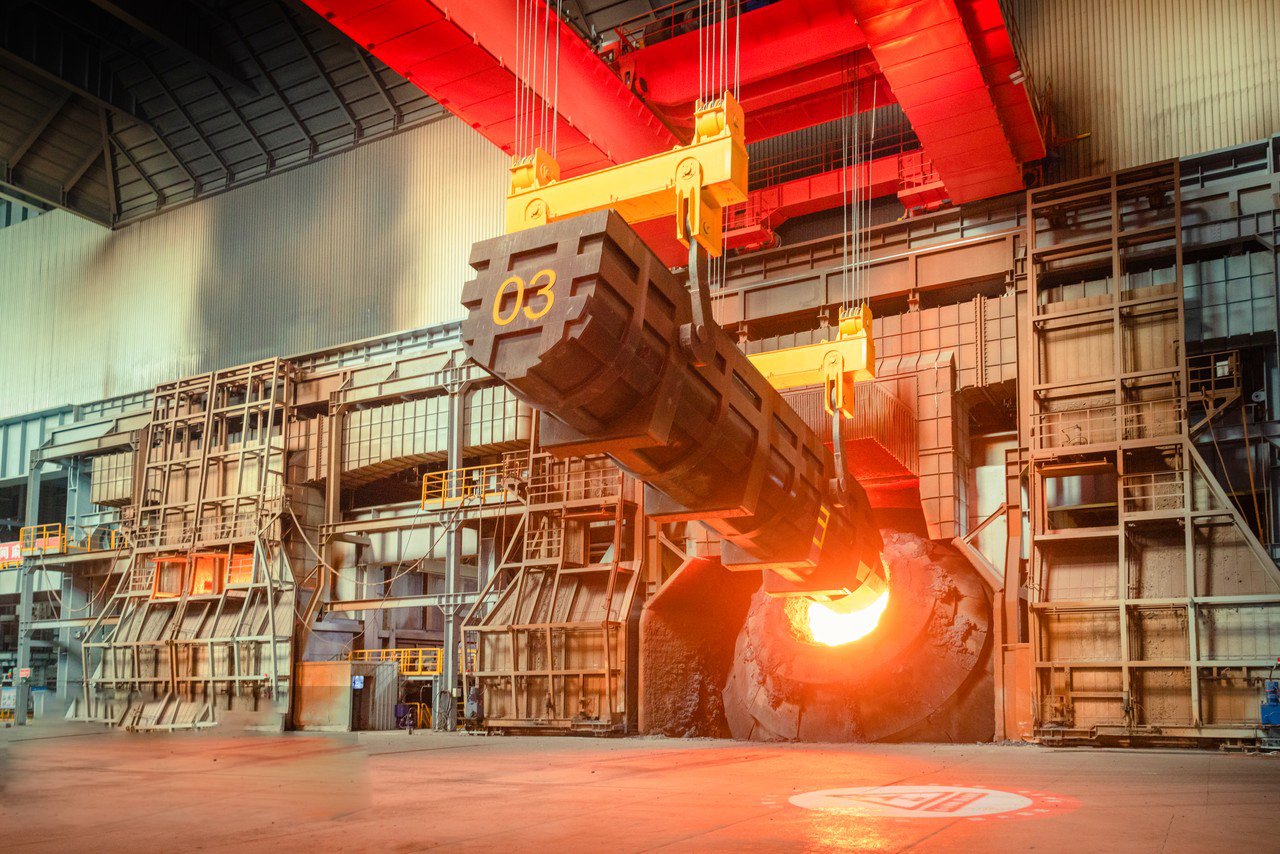
The Importance of Unit Consistency in Volume Calculation
The most common source of error in volume calculation is the mixing of units. It's incredibly easy to overlook if one dimension is in meters, another in centimeters, and thickness in millimeters. This happens frequently in fast-paced environments or when data is transcribed from various sources. As I’ve stressed before, if Length (L) = 2 meters, Width (W) = 100 centimeters, and Thickness (T) = 5 millimeters, a direct multiplication 2 × 100 × 5 = 1000 gives a nonsensical result. The correct approach is to convert all dimensions to a single base unit, ideally meters, before performing the multiplication.
So, L = 2 m.
W = 100 cm = 1 m (since 100 cm = 1 m).
T = 5 mm = 0.005 m (since 1000 mm = 1 m).
Now, Volume = L × W × T = 2 m × 1 m × 0.005 m = 0.01 m³. This value of 0.01 cubic meters is the correct volume to use for subsequent weight calculation.
This discipline of unit conversion is fundamental. I recall a situation with "InfraBuild Solutions," an engineering contractor client of MFY. They were working on a large infrastructure project requiring thousands of varied stainless steel components. Their initial material take-off sheets, compiled by several junior engineers, had inconsistent unit entries. This led to a significant over-ordering of certain materials because volumes were inadvertently inflated. After a joint review, we helped them implement a standardized template for their take-off sheets that enforced all dimensional inputs in meters. This simple change eliminated a major source of error and improved their material procurement efficiency considerably.
The impact of inconsistent units is not just an arithmetic error; it's a financial and logistical one. Overestimating volume leads to over-ordering material, unnecessary shipping costs, and storage issues. Underestimating can lead to project delays and emergency re-orders at premium prices. Ensuring every team member involved in estimation or procurement understands and meticulously applies unit conversion is a non-negotiable aspect of professional practice in industries using steel.
Calculating Volume for Irregularly Shaped Plates
While many stainless steel applications use standard rectangular plates, MFY also supplies material for projects involving irregularly shaped components. Calculating the volume of these requires different approaches. One common method is decomposition: breaking down the complex shape into a series of simpler, regular geometric forms (rectangles, triangles, circles, etc.). The area of each simple form is calculated, summed up, and then multiplied by the uniform thickness to get the total volume. This method can be laborious and prone to error if the decomposition is not accurate.
A far more efficient and accurate method for complex shapes involves using Computer-Aided Design (CAD) software. When a component is designed in 2D or 3D CAD, most software packages can automatically calculate the surface area (for 2D designs) or directly the volume (for 3D models) with high precision. This is particularly useful for intricate cut-outs or curved profiles. Many of MFY's manufacturing clients, such as "CustomMetalWorks," who specialize in bespoke fabrications, rely heavily on CAD data. They provide us with DXF or STEP files, from which our technical team can extract precise area or volume information if needed for estimating material requirements for our stainless steel sheets or plates before processing.
For very small, highly irregular physical parts where CAD models aren't available, the water displacement method (Archimedes' principle) can theoretically determine volume. The part is submerged in water, and the volume of displaced water equals the part's volume. However, this is impractical for large stainless steel plates and is more of a laboratory technique. The key takeaway is that for non-standard shapes, leveraging technology like CAD or meticulous geometric decomposition is essential for accurate volume determination before applying the thickness.
Accounting for Cut-outs and Holes in Volume Calculation
Many stainless steel plates are not solid slabs but feature cut-outs, holes, or perforations as part of their design for functional or aesthetic reasons. In these cases, calculating the net volume (the actual volume of the steel) is crucial. The general approach is:
- Calculate the gross volume of the plate as if it were solid:
Gross Volume = Length × Width × Thickness(using consistent units). - Calculate the volume of each cut-out or hole. For a circular hole, this would be
Volume_hole = π × radius_hole² × Thickness. For a rectangular cut-out,Volume_cutout = Length_cutout × Width_cutout × Thickness. - Sum the volumes of all such voids:
Total Void Volume = Sum of all Volume_hole / Volume_cutout. - Subtract the total void volume from the gross volume:
Net Volume = Gross Volume - Total Void Volume.
This net volume is then used to calculate the actual weight of the processed plate. I worked with a client, "PanelTech Systems," who manufactures large batches of perforated stainless steel sheets for architectural and industrial screening applications. Their initial estimates sometimes didn't fully account for the material removed by the perforations, leading to discrepancies in shipping weights and material costing. By implementing a system that precisely calculated the volume of steel removed by their perforation patterns (often a percentage based on the open area), they significantly improved their inventory accuracy and cost control. MFY's advanced processing lines can often be programmed not only to make the cuts but also to log the theoretical volume of material removed, aiding in such calculations if required by the client for their specific needs.
Here's an example for a plate with one circular hole:
Plate: 1m x 1m, 10mm thick. Hole: 0.2m radius.
Gross Volume = 1m × 1m × 0.01m = 0.01 m³
Hole Volume = π × (0.2m)² × 0.01m ≈ 3.14159 × 0.04m² × 0.01m ≈ 0.0012566 m³
Net Volume = 0.01 m³ - 0.0012566 m³ ≈ 0.0087434 m³
This net volume would then be multiplied by the density to find the weight.
| Component | Calculation | Result (m³) |
|---|---|---|
| Plate Dimensions | L=1m, W=1m, T=10mm (0.01m) | |
| Gross Volume | 1 × 1 × 0.01 |
0.0100000 |
| Hole Radius | r=0.2m | |
| Hole Volume | π × (0.2)² × 0.01 |
0.0012566 |
| Net Volume | Gross Volume - Hole Volume |
0.0087434 |
This meticulous approach is vital for any application involving processed or patterned stainless steel plates.
Volume requires consistent unitsTrue
All dimensions must be converted to the same unit (e.g., meters) before calculating volume to avoid errors.
Water displacement works for large platesFalse
Water displacement is impractical for large stainless steel plates; it's mainly a laboratory technique for small objects.
How does the density of stainless steel affect the weight calculation?
Are you overlooking the specific density of your stainless steel grade6, potentially skewing your weight calculations? Treating all stainless steels as having the same density is a common oversight that can lead to inaccuracies. As a supplier, MFY understands material properties are key.
The density of stainless steel, which varies depending on its specific grade (e.g., 304, 316, 430), is a direct multiplier in the weight formula (Weight = Volume × Density). Using the accurate density value for the specific alloy is crucial for precise weight calculation.
Density, defined as mass per unit volume, is a fundamental property of any material, and for stainless steel, it's not a one-size-fits-all value. The precise chemical composition of each stainless steel grade – the specific percentages of chromium, nickel, molybdenum, manganese, and other alloying elements – influences its overall density. For instance, austenitic grades like 304 or 316 generally have slightly higher densities (around 7900-8000 kg/m³) compared to ferritic grades like 430 (around 7700-7750 kg/m³) due to differences in their atomic structure and the atomic weights of their constituents, particularly nickel content. When we at MFY provide a quote or material specification for our stainless steel coils or sheets, we always consider the specific grade requested by clients, such as those in India or Southeast Asia, because this directly impacts the calculated weight for shipping and invoicing. Using a generic "steel" density can introduce errors of 1-3%, which, while seemingly small, can accumulate to significant amounts on large consignments. It's a detail that underscores the importance of precision in material science for practical commercial applications.
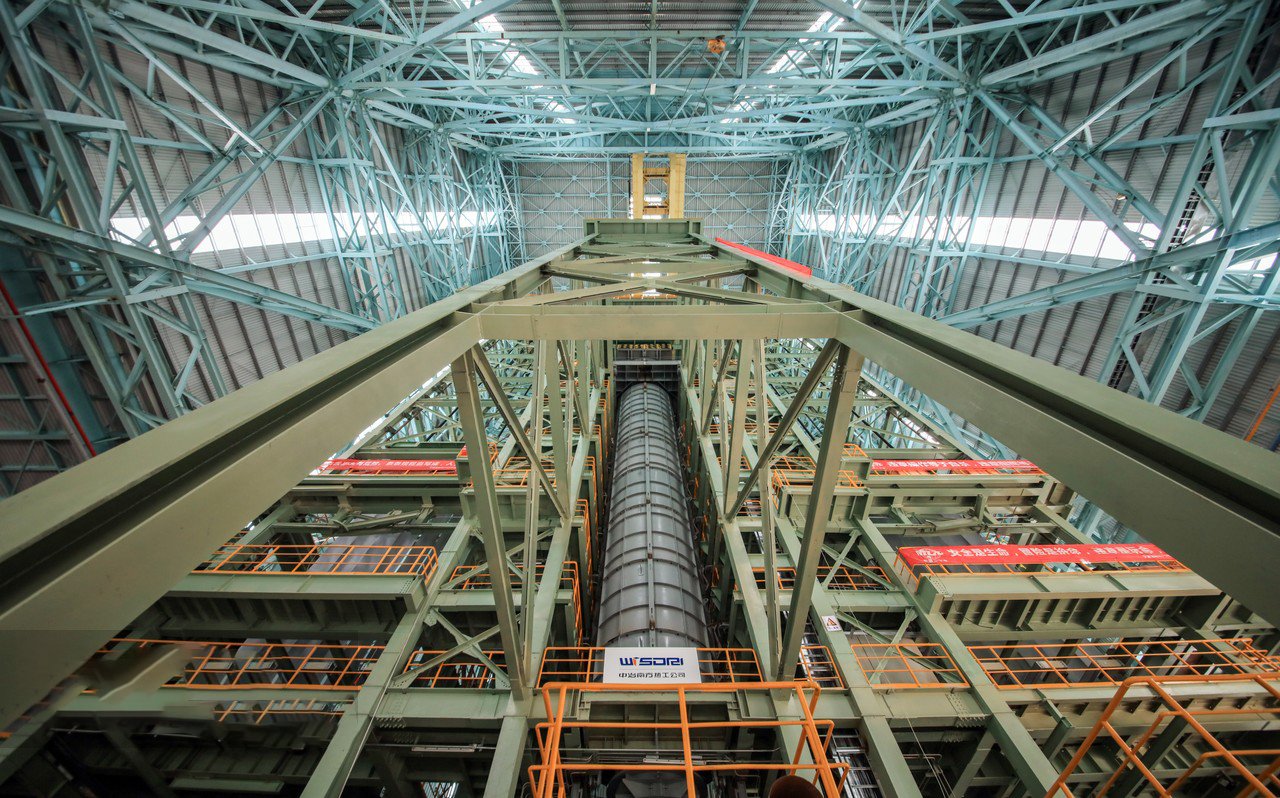
Understanding Density Variations Across Different Stainless Steel Grades
Density is an intrinsic property, fundamentally defined as mass per unit volume (ρ = m/V). In the context of stainless steel, this value is primarily determined by its elemental composition and, to a lesser extent, its crystallographic structure. Alloying elements such as chromium (Cr), nickel (Ni), molybdenum (Mo), manganese (Mn), and silicon (Si) are added to iron (Fe) to create various grades of stainless steel, each with unique properties. These elements have different atomic masses and pack differently within the steel's crystal lattice, leading to variations in overall density.
For example, austenitic stainless steels like AISI 304 (typically ~18% Cr, ~8% Ni) and AISI 316 (typically ~16-18% Cr, ~10-14% Ni, ~2-3% Mo) have densities around 7950-8000 kg/m³. The higher nickel content in these grades contributes to their slightly higher density compared to ferritic grades like AISI 430 (typically ~16-18% Cr, low Ni), which has a density closer to 7700-7750 kg/m³. Duplex stainless steels, which have a mixed austenite-ferrite microstructure, typically have densities around 7800-7850 kg/m³, falling between the two main groups. Using a generic "steel" density (often cited as 7850 kg/m³ for carbon steel) for all stainless steel calculations is a common mistake that can lead to appreciable errors. If you're calculating the weight of a large batch of 316L plates (density ~7980 kg/m³) but use 7850 kg/m³, your estimate will be low by about 1.6%. On a 100-tonne order, that's a 1.6-tonne discrepancy.
I recall a case with "EquipTech Global," a manufacturing company that produces specialized equipment using both 304 and 316L stainless steel components. Initially, their inventory and costing systems used a single, averaged density value for all stainless steel. This led to persistent small discrepancies in their material reconciliation reports. After a consultation, MFY helped them refine their bill of materials (BOM) to include grade-specific densities. This simple change led to a reported 3% improvement in their inventory valuation accuracy and better cost tracking per project. This illustrates that precision in material data directly translates to better business intelligence.
Here's a table of typical densities for common stainless steel grades:
| Stainless Steel Grade | Typical Density (kg/m³) | Notes |
|---|---|---|
| AISI 304 / 304L | 7950 - 8000 | Common austenitic grade |
| AISI 316 / 316L | 7980 - 8030 | Austenitic, higher Mo and Ni content |
| AISI 430 | 7700 - 7750 | Common ferritic grade |
| AISI 410 | 7750 - 7800 | Martensitic grade |
| Duplex 2205 | 7800 - 7850 | Austenitic-ferritic |
| Carbon Steel (for ref) | ~7850 | For comparison only |
Note: These are typical values; always refer to manufacturer specifications or relevant standards for precise figures.
Sources for Accurate Density Data
Obtaining accurate density data for the specific grade of stainless steel you are using is paramount. The primary and most reliable source is the material datasheet or Mill Test Certificate (MTC) provided by the manufacturer or supplier, such as MFY. These documents detail the chemical composition and mechanical properties of the specific heat or batch of steel, and often include the nominal density or enough information to accurately ascertain it. MFY makes it a standard practice to provide comprehensive MTCs with all our shipments of stainless steel coils, sheets, and pipes, ensuring our clients in target markets like the Middle East or Russia have the precise data they need.
Reputable industry standards and engineering handbooks are another excellent source. Organizations like ASTM International, ASM International (publisher of the ASM Handbook series), and national standards bodies publish extensive data on material properties, including densities for various alloys. For example, the ASM Handbook, Volume 1: Properties and Selection: Irons, Steels, and High-Performance Alloys, is a widely respected reference.
Online material property databases can also be useful, but it's crucial to verify the credibility of the source. University websites, well-known material science portals, or established industry associations are generally reliable. However, generic web search results should be cross-referenced with more authoritative sources. When comparing manufacturer data versus generic handbook data, manufacturer data for a specific batch is often the most precise, as handbook values are typically nominal or average figures for a grade. However, for general estimation purposes, reputable handbook values are perfectly acceptable.
The Influence of Temperature on Density (and its relevance in calculations)
Materials, including stainless steel, generally expand when heated and contract when cooled. This phenomenon is known as thermal expansion. As the volume of a material changes with temperature (while its mass remains constant), its density also changes inversely: Density = Mass / Volume. If temperature increases, volume increases, and thus density decreases slightly. The extent of this change is characterized by the coefficient of thermal expansion. Austenitic stainless steels, for example, have a coefficient of linear thermal expansion of roughly 17 x 10⁻⁶ m/(m·°C).
For most practical, day-to-day weight calculations of stainless steel plates at ambient or room temperatures (e.g., for logistics, inventory, basic structural estimation), the effect of temperature on density is negligible and typically ignored. The nominal density values provided in datasheets are usually for room temperature (around 20°C or 68°F). The slight variations in density due to typical ambient temperature fluctuations are usually well within the tolerance range of other measurements (like thickness or length/width) and the inherent variations in the material itself.
However, the influence of temperature on density can become significant in high-precision engineering applications or when materials are used at significantly elevated or cryogenic temperatures. For example, in the design of components for aerospace, power generation turbines, or certain chemical processing equipment operating under extreme temperatures, engineers must account for changes in density and other temperature-dependent material properties. A research note might indicate that the density of austenitic stainless steel changes by approximately -0.005% per degree Celsius rise in temperature. While small, over a large temperature range, this could be a factor for highly sensitive calculations. But for the vast majority of MFY’s clients, including manufacturing companies and engineering contractors who use our stainless steel products under more standard conditions, using the nominal room-temperature density is perfectly adequate and standard industry practice.
316 stainless steel is denser than 430True
Austenitic 316 (~7980-8030 kg/m³) contains more nickel and molybdenum than ferritic 430 (~7700-7750 kg/m³), resulting in higher density.
All stainless steel grades share identical densityFalse
Density varies by 2-4% between grades (e.g., 304 vs 430) due to differing alloy compositions and crystal structures.
What tools can assist in accurately calculating stainless steel plate weight?
Tired of manual calculations for stainless steel plate weights, fearing a slip of the calculator could lead to costly errors? Such mistakes can impact your bottom line and project timelines. My work at MFY has shown me that leveraging the right tools can make all the difference.
Tools that assist in accurately calculating stainless steel plate weight range from basic handheld calculators for simple checks, to spreadsheet software like Excel or Google Sheets for customizable calculations, and specialized online weight calculators or integrated industry-specific software for greater efficiency.
In today's fast-paced business environment, especially in industries reliant on precise material management like construction or manufacturing, relying solely on manual calculations is becoming increasingly inefficient and prone to human error. As Global Business Director at MFY, I've seen firsthand how our clients benefit from adopting various tools to streamline their stainless steel weight calculations. Simple electronic calculators are fine for quick, one-off estimates. However, for repetitive tasks or managing multiple items, spreadsheet programs like Microsoft Excel or Google Sheets offer powerful capabilities. You can create templates with built-in formulas, unit conversions, and even look-up tables for densities of different stainless steel grades that MFY supplies. Beyond spreadsheets, numerous online weight calculators specific to metals7 are readily available, providing quick answers if you have the dimensions and grade. For larger enterprises, more sophisticated solutions like Enterprise Resource Planning (ERP) systems often integrate weight calculation modules directly into their inventory and procurement processes, drawing data from a central material database. The goal of using any tool is to enhance accuracy, save time, and reduce the risk of errors that can cascade into significant financial or logistical problems.

The choice of tool for calculating stainless steel plate weight often depends on the complexity of the task, the volume of calculations, and the level of integration required with other business processes.
Leveraging Spreadsheet Software (Excel, Google Sheets)
Spreadsheet software like Microsoft Excel or Google Sheets is arguably one of the most versatile and widely accessible tools for calculating stainless steel plate weights. Their power lies in flexibility. One can easily set up a worksheet with dedicated cells for inputting dimensions – Length (L), Width (W), and Thickness (T) – and another cell for the specific stainless steel grade's density (ρ). Then, a formula cell can be programmed to perform the calculation: =(L_cell * W_cell * T_cell_mm * Density_cell) / 1000. This provides an instant result in kilograms, assuming L and W are in meters and T is in millimeters. The beauty of this approach is its adaptability. You can create templates for different projects or material types, easily copy formulas for multiple line items, and sum total weights for an entire order or inventory list.
Further enhancements can include adding data validation to ensure inputs are numerical, or creating drop-down lists for common stainless steel grades (e.g., 304, 316L, 430 – all products MFY regularly exports) that automatically populate the correct density value from a hidden reference table. This reduces manual data entry for density and minimizes the risk of using an incorrect value. I've personally helped several of MFY's sales team members develop such customized spreadsheets. These tools allow them to rapidly and accurately generate weight estimates and proforma invoices for clients like "RapidBuild Construction," who frequently require quotes for diverse schedules of stainless steel plates and pipes across various dimensions and grades. The ability to save, share, and modify these spreadsheets makes them invaluable for collaborative projects.
Moreover, spreadsheets can track historical data, compare estimated versus actual weights, and even generate simple charts or reports. For many small to medium-sized enterprises, including distributors and traders who are key target clients for MFY, a well-structured spreadsheet is often the most cost-effective and efficient solution for managing weight calculations. They offer a good balance between manual control and automation, empowering users to understand and verify the calculation process.
Online Stainless Steel Weight Calculators
For quick, ad-hoc calculations, or for those who may not be comfortable setting up spreadsheet formulas, numerous online stainless steel weight calculators are available. A simple web search will yield many options, often provided by metal suppliers, industry associations, or engineering resource websites. These tools typically feature user-friendly interfaces where you input the shape (plate, pipe, bar, etc.), the material grade (often from a drop-down list), and the dimensions. The calculator then instantly provides the estimated weight.
When selecting an online calculator, it's advisable to look for certain features: a comprehensive list of stainless steel grades with their corresponding densities, options for different units of measurement (metric and imperial), and the ability to calculate weights for various common shapes beyond just rectangular plates (e.g., round bars, tubes, hexagonal bars). Some advanced calculators might even allow for inputting quantities or summing multiple items. The main advantages of online calculators are their ease of use – no setup is required – and their accessibility from any device with internet access. They are perfect for a quick check or for individuals who only occasionally need to perform such calculations.
However, there are also considerations. Users should be mindful of the source and reliability of the calculator; it's best to use tools from reputable industry names. MFY, for instance, is exploring adding such a utility to our website, www.mfysteel.com, as a service to our global clientele. Another potential downside is the lack of customization or the inability to save calculations for future reference or batch processing, which spreadsheets handle well. For one-off calculations for a specific plate of, say, 316L stainless steel sheet, an online tool is excellent. But for managing an entire bill of materials for a large project, it might be less efficient than a dedicated spreadsheet or software. Many of MFY's distributor partners in Southeast Asia and the Middle East do offer such calculators on their local websites, which helps their end-users in initial project estimations.
Advanced Tools: ERP/MRP Systems and CAD Software Integration
For larger manufacturing companies and complex engineering projects, more sophisticated tools like Enterprise Resource Planning (ERP) and Material Requirements Planning (MRP) systems often come into play. These integrated software solutions manage many aspects of a business, including inventory, procurement, production planning, and finance. Within their material master data modules, specific properties like density for each type of stainless steel (e.g., MFY's coils, sheets, or pipes) can be stored. When a production order or a bill of materials calls for a certain quantity and dimension of a specific grade, the ERP/MRP system can automatically calculate the required weight for procurement, inventory tracking, and costing purposes. This high level of automation reduces manual data entry, minimizes errors, and ensures consistency across the organization.
Another powerful advanced tool is Computer-Aided Design (CAD) software. When engineers design components or assemblies in 3D CAD systems (like SolidWorks, AutoCAD, CATIA, etc.), these programs can often calculate the volume of the designed part with very high precision. If the material (e.g., stainless steel grade 304) and its density are assigned to the 3D model, the software can then automatically compute the mass of the component. This is invaluable for complex shapes where manual volume calculation would be extremely difficult or impossible. This integration of design and material data streamlines the workflow from the engineering department to procurement and manufacturing.
The true power of these advanced tools lies in their integration capabilities. Data can flow seamlessly from a CAD model into an ERP system, which then uses the weight information for planning raw material purchases (perhaps from a supplier like MFY), scheduling production, and calculating shipping costs. MFY's vision includes developing digital tools and platforms that can interface more directly with our clients' ERP or procurement systems, facilitating a more efficient and transparent supply chain. This could involve API integrations for real-time stock information, automated quotation based on precise weight calculations, and streamlined order processing, ultimately helping our global clients build more efficient and competitive operations.
A comparative look at these tools:
| Tool Type | Key Features | Pros | Cons | Best Suited For |
|---|---|---|---|---|
| Manual (Calculator) | Basic arithmetic | Simple for single items | Prone to error, slow for multiple items, no data storage | Quick, one-off checks |
| Spreadsheet (Excel/Sheets) | Formulas, templates, data storage, customization | Flexible, good for batch calcs, reusable, low cost | Requires setup, potential for formula errors if not careful | SMBs, regular multiple calculations, custom needs |
| Online Calculators | Web-based, pre-set grades/shapes | Easy to use, quick, no setup, accessible | Limited customization, reliability varies, not for batch processing | Occasional users, quick estimates, standard shapes |
| ERP/MRP Systems | Integrated with inventory, procurement, production | High automation, accuracy, centralized data, process efficiency | Expensive, complex implementation, requires data discipline | Larger enterprises, complex manufacturing operations |
| CAD Software | 3D modeling, volume/mass calculation | Highly accurate for complex shapes, design integration | Specialized software, primarily for design phase, requires expertise | Engineering design, custom/complex component mfg. |
Choosing the right tool, or combination of tools, ultimately depends on the specific needs, scale of operations, and technical capabilities of the user or organization.
Spreadsheets can calculate stainless steel weightTrue
Excel and Google Sheets can be programmed with formulas to accurately calculate stainless steel plate weights using dimensions and material density.
Online calculators store historical dataFalse
Most online stainless steel weight calculators don't save calculations - this is a key advantage of spreadsheet solutions.
Conclusion
Accurate stainless steel plate weight calculation, using the precise mm-to-kg formula, correct dimensions, and grade-specific density, is crucial. As your partner, MFY emphasizes this precision for efficient project planning, cost control, and successful logistics in all your stainless steel endeavors globally.
-
Learn the inaccuracies in weight calculations affect steel plate shipments ↩
-
Find How to avoid errors when using calipers for measuring stainless steel plates ↩
-
Learn the importance of accurate density values for precise weight calculations in steel trading. ↩
-
Compare the densities of common stainless steel grades to ensure accurate calculation
Why is unit consistency important in calculating metal volume?: null ↩ -
Learn how density variations influence weight calculations in industrial applications ↩
-
Discover reliable online tools for quick and easy stainless steel weight calculations ↩
-
Discover the best online calculators for stainless steel weight calculation ↩
Have Questions or Need More Information?
Get in touch with us for personalized assistance and expert advice.
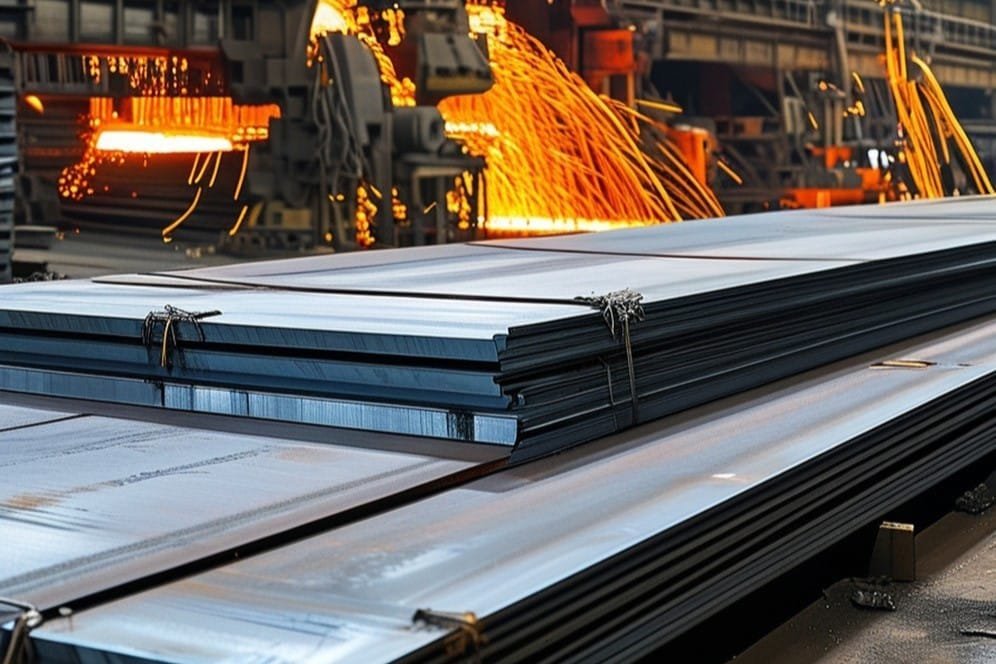
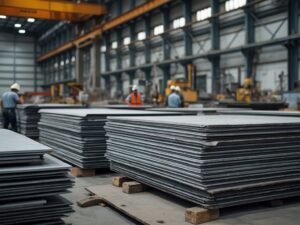
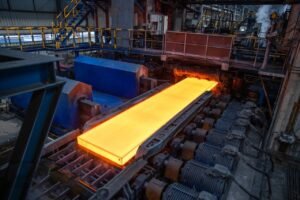
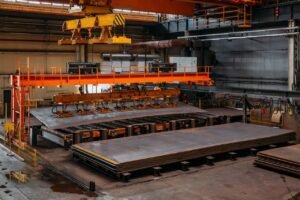
![304 Stainless Sheet Price per Ton 2025 [Predictive Insights & Key Factors]](https://mfysteel.com/wp-content/uploads/2025/06/18t07-300x200.png)

